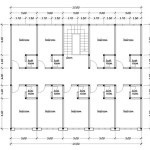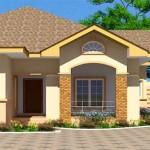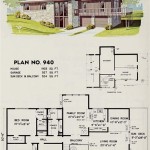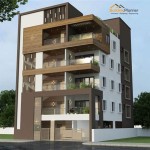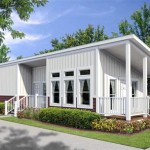Pacific Northwest Modern Home Plans: Embracing Nature and Simplicity
The Pacific Northwest Modern architectural style is characterized by a harmonious blend of natural materials, clean lines, and a strong connection to the surrounding landscape. Originating in the region's unique environment, this design aesthetic prioritizes sustainability, energy efficiency, and a minimalist approach to living. Pacific Northwest Modern home plans are increasingly popular among those seeking a dwelling that reflects the beauty and values of the area.
These homes often feature large windows, open floor plans, and exposed natural wood, creating a sense of spaciousness and bringing the outdoors in. The emphasis on natural light and ventilation contributes to a healthy and comfortable indoor environment. Understanding the core elements of this design style is essential for anyone considering building or renovating a home in this manner.
Key Point 1: The Importance of Natural Materials and Connection to the Landscape
One of the defining characteristics of Pacific Northwest Modern home plans is the use of natural materials like wood, stone, and concrete. These materials are not only aesthetically pleasing but also help to integrate the home into its natural surroundings. Locally sourced lumber, such as cedar, fir, and hemlock, are frequently employed for siding, beams, and interior details. The natural grain and texture of the wood add warmth and visual interest to the design.
The incorporation of stone, often found in fireplaces or exterior accents, further reinforces the connection to the earth. Concrete, whether polished or left with a raw finish, provides a durable and modern element that complements the other natural materials. These materials are often left exposed, showcasing their inherent beauty and contributing to the minimalist aesthetic of the style.
Furthermore, Pacific Northwest Modern homes are designed to maximize views of the surrounding landscape. Large windows and sliding glass doors are strategically placed to capture vistas of mountains, forests, and waterways. Decks and patios extend the living space outdoors, providing opportunities to enjoy the natural environment. Landscaping is often kept natural and low-maintenance, using native plants to blend seamlessly with the existing vegetation.
The strategic placement of the home on the site is also crucial. Architects carefully consider the topography, sun exposure, and prevailing winds to optimize energy efficiency and minimize environmental impact. Overhanging roofs and deep eaves provide shade in the summer and protection from rain in the winter. The orientation of the home is also designed to maximize natural light and views, creating a comfortable and inviting living space.
The use of natural materials extends beyond the structural elements of the home. Interior design often incorporates natural textures and colors, such as wool rugs, linen upholstery, and earthenware pottery. These details create a sense of warmth and comfort, complementing the minimalist aesthetic of the architecture. The overall effect is a home that feels both modern and grounded in its natural surroundings.
Key Point 2: Sustainable Design and Energy Efficiency
Sustainability is a core principle of Pacific Northwest Modern design. Home plans prioritize energy efficiency, water conservation, and the use of environmentally friendly materials. This commitment to sustainability reflects the region's values and helps to minimize the environmental impact of the home.
Energy efficiency is achieved through various strategies, including passive solar design, high-performance insulation, and energy-efficient windows and doors. Passive solar design utilizes the sun's energy to heat and light the home, reducing the need for artificial heating and lighting. High-performance insulation helps to maintain a consistent temperature inside the home, minimizing energy loss. Energy-efficient windows and doors prevent drafts and reduce heat transfer, further improving energy efficiency.
Water conservation is another important aspect of sustainable design. Low-flow fixtures, such as toilets, faucets, and showerheads, help to reduce water consumption. Rainwater harvesting systems can be used to collect rainwater for irrigation or other non-potable uses. Drought-tolerant landscaping reduces the need for irrigation, further conserving water.
The use of environmentally friendly materials is also crucial to sustainable design. Recycled and reclaimed materials are often used in construction, reducing the demand for new resources. Low-VOC (volatile organic compound) paints, adhesives, and sealants are used to minimize indoor air pollution. Sustainable wood products, such as bamboo flooring or FSC-certified lumber, are used to ensure responsible forest management.
In addition to these specific strategies, Pacific Northwest Modern home plans often incorporate green building certifications, such as LEED (Leadership in Energy and Environmental Design) or Built Green. These certifications provide a framework for sustainable design and construction, ensuring that the home meets specific performance standards.
The benefits of sustainable design extend beyond environmental considerations. Energy-efficient homes are more comfortable to live in, with consistent temperatures and reduced drafts. They also have lower utility bills, saving homeowners money over the long term. Sustainable materials are often healthier for occupants, contributing to improved indoor air quality and reduced exposure to harmful chemicals.
Key Point 3: Open Floor Plans and Minimalist Aesthetics
Pacific Northwest Modern home plans typically feature open floor plans that create a sense of spaciousness and connection. These open layouts allow for flexible living spaces that can be easily adapted to different needs. The minimalist aesthetic emphasizes clean lines, simple forms, and a lack of unnecessary ornamentation.
Open floor plans eliminate walls between living areas, such as the kitchen, dining room, and living room. This creates a large, unified space that is ideal for entertaining and family gatherings. The open layout also allows for greater natural light penetration, making the home feel brighter and more inviting.
The minimalist aesthetic is characterized by its simplicity and functionality. Furniture and décor are carefully selected and arranged to create a clean and uncluttered space. Color palettes are often muted and natural, reflecting the surrounding landscape. Artwork and personal items are kept to a minimum, allowing the architecture to speak for itself.
Clean lines and simple forms are essential elements of the minimalist design. Architectural details are kept to a minimum, focusing on the essential elements of the structure. Windows and doors are often large and rectangular, providing unobstructed views of the outdoors. Rooflines are typically low-pitched or flat, further emphasizing the horizontal lines of the design.
The combination of open floor plans and minimalist aesthetics creates a living space that is both functional and aesthetically pleasing. The open layout allows for flexible use of space, while the minimalist design promotes a sense of calm and tranquility. The overall effect is a home that is both modern and comfortable.
Storage is also carefully considered in minimalist design. Built-in cabinets and shelving are used to maximize storage space and minimize clutter. Hidden storage compartments are often incorporated into furniture and architectural details. The goal is to create a space that is both functional and aesthetically pleasing, with everything in its place.
Pacific Northwest Modern home plans represent a distinct architectural style that prioritizes natural materials, sustainability, and minimalist aesthetics. These homes are designed to connect with the surrounding landscape, promote energy efficiency, and create a comfortable and inviting living space.
The style continues to evolve, adapting to new technologies and changing lifestyles. However, the core principles of natural materials, sustainability, and minimalist aesthetics remain central to the design. Pacific Northwest Modern homes offer a unique and appealing option for those seeking a dwelling that reflects the beauty and values of the region.
The integration of smart home technology is also becoming increasingly common in Pacific Northwest Modern homes. Smart thermostats, lighting control systems, and automated window shades can further enhance energy efficiency and convenience. These technologies can be seamlessly integrated into the minimalist design, providing a modern and functional living experience.
Ultimately, Pacific Northwest Modern home plans offer a compelling vision for sustainable and stylish living. By embracing natural materials, prioritizing energy efficiency, and creating open and minimalist spaces, these homes provide a unique and appealing alternative to more traditional architectural styles.

Perfect Plans For State And The Northwest Blog Eplans Com

Northwest Modern House Plans Home Designs Floor

7 Home Styles Of The Pacific Northwest Hammer Hand

7 Home Styles Of The Pacific Northwest Hammer Hand

Perfect Plans For State And The Northwest Blog Eplans Com

Award Winning Architectural Designs Home Plans Nw

Island Living With Spectacular Views In The Pacific Northwest

Pacific Northwest House Plans Atera Homes

Award Winning Architectural Designs Home Plans Nw

Perfect Plans For State And The Northwest Blog Eplans Com



